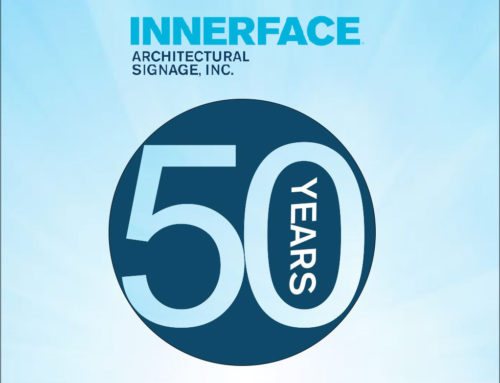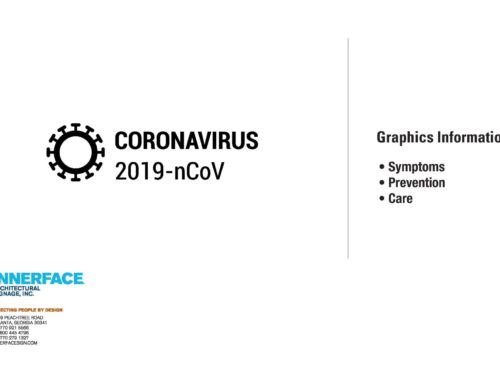
We’ve all had them, and they’re always memorable.
The key moments, when something clicks, when everything falls into place. All of the moving parts suddenly look like they belong right where they are. For a design process to create that moment, it takes patience, persistence, and a passion for a solution.
All Innerface interior signs have a key, and that key transforms them from a collection of different signs into a system. It makes them flexible and adaptable, capable of changing at any time. It allows them to respond to change quickly, simply and cost effectively. We have a solution. A core value of change, and a way to make it work. In more than 48 years, we haven’t looked back, and our system is in more than 12,000 facilities across the country and around the world.
Before Innerface started making signs, we were a design firm: Rupert Jensen Associates.
Almost fifty years ago, the principals of RJA Design, John Rupert and Ken Jensen, spent a year of Saturdays thinking about change. They met weekly with a variety of users and students from Georgia Tech’s school of Industrial Design. They asked questions: How much do signs need to change? How often? What is the simplest, most effective way to change them?
Therefore, cost became a focus. Unlike anything at the time, every state-of-the-art interior sign was silk screened, with each message created individually. Signs were burnished, burned, and printed, and essentially created from scratch. It was a very expensive and cumbersome process, and it produced a sign with a permanent, unchangeable message.
Multiply that sign by hundreds of rooms in the average hospital or office building, and obviously it becomes a significant cost. Not just when the building opens, but also when someone moves or a department changes. What about someone getting married, promoted, or even fired? The sign needed to be replaced, with the same costs as when it went up the first time, and with the same amount of needed materials.
The discussion pointed to an idea: What if the signs and the messages were separate? What if you could change the message without replacing the sign?
That was the problem and there was a place for a solution.
Clearly, the message needed to be somehow removable and a separate component from the rest of the sign. An insert was needed, with a pocket to hold it, and a way to change it. It needed to be the least costly part of the sign. The first inserts were paper, and they kept getting stuck. Maybe a thumb hole? No, too crude and obvious. The sign needed to look permanent without revealing that it could be changed. And paper looks like, well, paper. Temporary.
Furthermore, they needed a key. A way to unlock changeability, a method for change, of everything from a small room sign to a large and complex directory or directional sign. A successful system solution is flexible enough to address all interior sign applications, and the key enabled the system to work.
We tested dozens of different materials before finding a substrate with the right combination of rigidity and thickness. With a crescent shaped cut, and a bend in the tab, it became a cleat: something that could lock into a slot in the insert, and remove it from the sign.
Words can’t really do the justice to the elegance of our patented insert key system.
Send your address to Matt Brown our Vice President of Design Services, and we’ll send you a personal desktop sign with your name and a key, so you can see for yourself.






